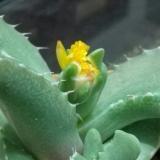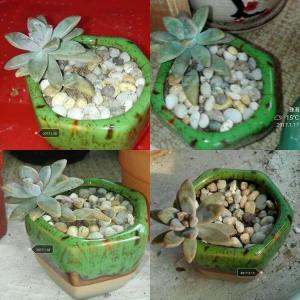文章
Miss Chen
2018年02月05日

Description: This perennial wildflower is 1¼–2½' tall. It is unbranched, unless the central stem is broken off, in which case 2-3 lateral stems will develop. The central stem is green, slender, and hairless – it is without purple streaks or spots. The opposite leaves are medium green, linear-lanceolate to linear in shape, smooth (entire) along their margins, and hairless. Each leaf has a prominent central vein. The lower leaves are either sessile or they clasp the stem, while the upper leaves are sessile.
At the apex of the central stem, there occurs a small cluster of 3-20 flowers with pink or lavender corollas. The flower cluster is slightly dome-shaped, rather than flat-topped or elongated. Individual flowers are about ¾" across or slightly larger. Each flower has 5 petal-like lobes that spread outward from the throat of a corolla that is narrowly tubular below. These lobes are obovate to obcordate in shape with either rounded or slightly notched tips. The calyx is deeply divided into 5 slender lobes that are linear to linear-lanceolate; it is green to purple and hairless. The calyx is shorter than the tubular base of the corolla. The reproductive organs are inserted within the corolla and inconspicuous. The flowers are fragrant. The blooming period can occur from late spring to late summer, lasting about 1-2 months. The flowers are replaced by narrow seed capsules; each capsule contains many small seeds. The root system consists of a taproot. This plant spreads by reseeding itself.
Cultivation: The preferred situation consists of full sun to light shade, moist conditions, and a fertile loam or sandy loam with decaying organic material. Young plants can be killed by summer heat and drought, particularly in locations that lack adequate moisture. There is a tendency to sprawl, unless this plant is supported by grass and other kinds of vegetation. Foliar disease isn't a significant problem.

Range & Habitat: The native Smooth Phlox occurs occasionally in the eastern two-thirds of Illinois, but it is uncommon or absent in western Illinois (see Distribution Map). Habitats include moist black soil prairies, moist sand prairies, cemetery prairies, prairie remnants along railroads, openings in bottomland woodlands, thickets, acidic gravelly seeps, and abandoned fields. This is an indicator plant of higher quality prairie remnants – the showy flowers can be spotted from some distance away, facilitating the discovery of new sites.
Faunal Associations: The flowers of Smooth Phlox are visited by butterflies, skippers, and moths for nectar. Butterfly visitors include Monarchs, Swallowtails, and Sulfurs. Occasionally, small Syrphid flies may feed on the pollen, but they are non-pollinating. The larvae of a long-horned beetle, Oberea flavipes, bore through the stems. The caterpillars of the moth Heliothis turbatus (Spotted Straw) eat the flowers, while the caterpillars of the moth Lacinipolia olivacea (Olive Arches) eat the foliage. Some plant bugs suck on the juices of the this plant, including Lopidea davisi (Phlox Scarlet Plant Bug) and Poecilocapsus lineatus (Four-Lined Plant Bug). Rabbits, groundhogs, deer, and probably other mammalian herbivores readily consume Smooth Phlox.
Photographic Location: The photographs were taken at a moist prairie remnant along an abandoned railroad in Champaign County, Illinois.

Comments: This plant has attractive foliage and flowers. Some authors from the eastern coast of the United States report the size of Smooth Phlox as up to 4-5' tall, but such huge plants apparently don't occur in Illinois. Smooth Phlox resembles Phlox pilosa (Prairie Phlox), except the latter species typically has hairy stems and calyces, and it tends to be shorter and blooms earlier. Smooth Phlox even more closely resembles the hairless Phlox pilosa sangamonensis (Sangamon Phlox), but the petal-like lobes of the latter species are less rounded and more angular (rhombic) in shape, while the bases of its petal-like lobes are more narrow and wedge-shaped. Another similar species, Phlox maculata (Meadow Phlox), has stems with purple spots or streaks, wider leaves, and a more elongated inflorescence. Smooth Phlox can be rather variable across different populations, possibly because of some hybridization with other Phlox spp. If a site is sufficiently moist, both Smooth Phlox and Meadow Phlox are found occasionally with Prairie Phlox.
At the apex of the central stem, there occurs a small cluster of 3-20 flowers with pink or lavender corollas. The flower cluster is slightly dome-shaped, rather than flat-topped or elongated. Individual flowers are about ¾" across or slightly larger. Each flower has 5 petal-like lobes that spread outward from the throat of a corolla that is narrowly tubular below. These lobes are obovate to obcordate in shape with either rounded or slightly notched tips. The calyx is deeply divided into 5 slender lobes that are linear to linear-lanceolate; it is green to purple and hairless. The calyx is shorter than the tubular base of the corolla. The reproductive organs are inserted within the corolla and inconspicuous. The flowers are fragrant. The blooming period can occur from late spring to late summer, lasting about 1-2 months. The flowers are replaced by narrow seed capsules; each capsule contains many small seeds. The root system consists of a taproot. This plant spreads by reseeding itself.
Cultivation: The preferred situation consists of full sun to light shade, moist conditions, and a fertile loam or sandy loam with decaying organic material. Young plants can be killed by summer heat and drought, particularly in locations that lack adequate moisture. There is a tendency to sprawl, unless this plant is supported by grass and other kinds of vegetation. Foliar disease isn't a significant problem.

Range & Habitat: The native Smooth Phlox occurs occasionally in the eastern two-thirds of Illinois, but it is uncommon or absent in western Illinois (see Distribution Map). Habitats include moist black soil prairies, moist sand prairies, cemetery prairies, prairie remnants along railroads, openings in bottomland woodlands, thickets, acidic gravelly seeps, and abandoned fields. This is an indicator plant of higher quality prairie remnants – the showy flowers can be spotted from some distance away, facilitating the discovery of new sites.
Faunal Associations: The flowers of Smooth Phlox are visited by butterflies, skippers, and moths for nectar. Butterfly visitors include Monarchs, Swallowtails, and Sulfurs. Occasionally, small Syrphid flies may feed on the pollen, but they are non-pollinating. The larvae of a long-horned beetle, Oberea flavipes, bore through the stems. The caterpillars of the moth Heliothis turbatus (Spotted Straw) eat the flowers, while the caterpillars of the moth Lacinipolia olivacea (Olive Arches) eat the foliage. Some plant bugs suck on the juices of the this plant, including Lopidea davisi (Phlox Scarlet Plant Bug) and Poecilocapsus lineatus (Four-Lined Plant Bug). Rabbits, groundhogs, deer, and probably other mammalian herbivores readily consume Smooth Phlox.
Photographic Location: The photographs were taken at a moist prairie remnant along an abandoned railroad in Champaign County, Illinois.

Comments: This plant has attractive foliage and flowers. Some authors from the eastern coast of the United States report the size of Smooth Phlox as up to 4-5' tall, but such huge plants apparently don't occur in Illinois. Smooth Phlox resembles Phlox pilosa (Prairie Phlox), except the latter species typically has hairy stems and calyces, and it tends to be shorter and blooms earlier. Smooth Phlox even more closely resembles the hairless Phlox pilosa sangamonensis (Sangamon Phlox), but the petal-like lobes of the latter species are less rounded and more angular (rhombic) in shape, while the bases of its petal-like lobes are more narrow and wedge-shaped. Another similar species, Phlox maculata (Meadow Phlox), has stems with purple spots or streaks, wider leaves, and a more elongated inflorescence. Smooth Phlox can be rather variable across different populations, possibly because of some hybridization with other Phlox spp. If a site is sufficiently moist, both Smooth Phlox and Meadow Phlox are found occasionally with Prairie Phlox.
0
0
文章
家里的二哈爱吃花
2018年02月04日


1.叶肿病
它一般主要危害迎红杜鹃的花芽上面、嫩叶和新梢上。刚开始叶片的正面上会出现淡黄色半透明的圆形斑,之后就会变成黄色。还有点下陷。这样就会让叶子开始枯黄,就早早的落下了。严重的时候还会让叶柄上面形成片的病斑,变得非常畸形肥厚。
防治方法:在开始发病之前,尤其是在它抽梢展叶的时候,可以进行一些农药喷洒,如果发现病叶还要给它马上就清理掉。在发芽之前发病的话,也是可以喷洒一些农药进行治理,发病后还要继续用其他的农药喷洒。

2.叶斑病和褐斑病
这两种病害都是直接影响它的叶片、叶柄和茎部。叶子上面的病斑是圆形的,之后就会开始渐渐扩大,呈现出来不规则的大病斑,还会产生一些轮纹,然后病斑就会从红褐色慢慢渐变成黑褐色的,中间是灰褐色。不论是哪一种病害,都可能让它的整个植株完全枯黄死掉。
防治方法:在5到8月份的时候我们可以找一些对应的农药,进行一定的配置之后,然后每隔上10天左右的时候,给它喷洒一次,前后一共喷洒7到8次就可以了,这样就可以很好的控制住病害的发展。为了不让一些叶片变黄,还可以增加其他的溶剂。
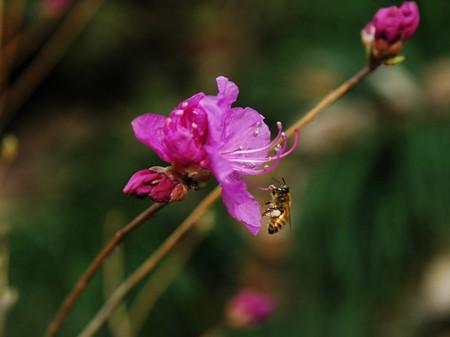
3.币厄病
听起来真的是一种很奇怪的病害。一般只要是受到伤害的嫩枝叶片的上面,就会马上布满了比较密的白色或者是粉红色的病害,其中大部分都是蚜虫造成的 。
防治方法:首先要把那些病叶给清除掉,然后在对它喷洒一些药剂,另外还要掌握一定的喷洒技巧,这样就可以让它不容易再有新的病害了。

0
0
文章
权问薇
2018年02月04日

绿萝
操作方法:
1、剪下一段绿萝枝条,最好挑选带有气生根的,这样绿萝更容易生根,成活率也高。
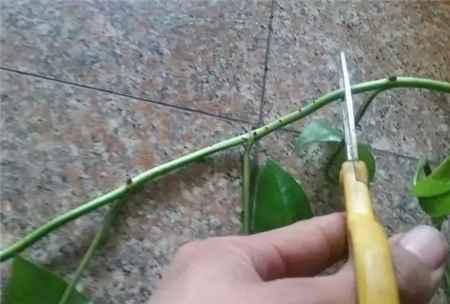
2、把剪下的绿萝再分成小段,每段保留一片叶就行。

3、把绿萝插到准备好的花盆里,土不要覆盖的太厚。然后浇一次水,放在通风的位置养护。

4、等到绿萝开始生长,长出新叶的时候,可以把绿萝搬到南阳台,晒一晒太阳,用不了两个月,就能长成一盆全新的绿萝!

长寿花
操作方法:
1、剪下长寿花的枝条,分成小段,每段只留一对叶子就可以,否则叶片多了会增加养分流失,影响生根速度。
2、把剪好的长寿枝条插到土里,长寿花扦插对土壤要求不高,用普通园土加点沙子就行。

3、等到长寿花长出新叶之后,就可以搬到阳台,多晒太阳,每周浇1次水,很快就能长成一盆大长寿花了!
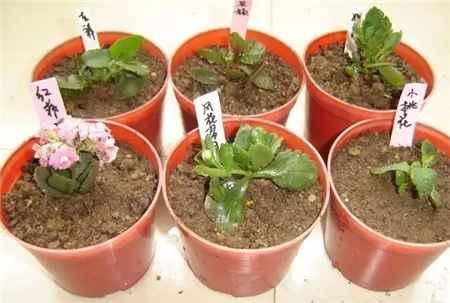
发财树
操作方法:
1、剪下比较健壮的发财树枝,最好是一年以上的木质枝条,每个扦插的枝条保留2~4片叶子就可以。
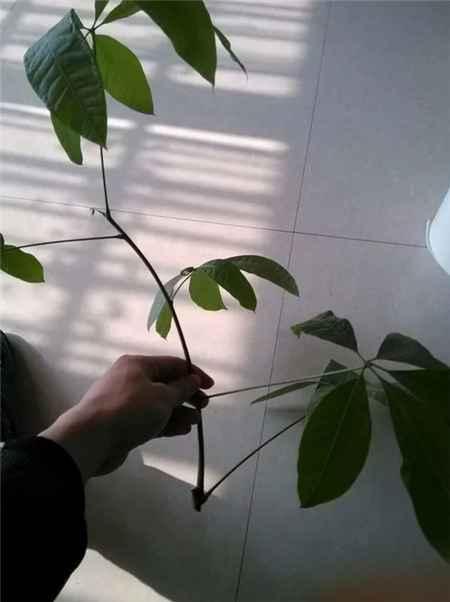
2、把发财树枝条插到准备好的沙子里,浇一遍水,放在阴凉的地方养护,之后每天都喷喷水,保持河沙湿润。

3、大概一个月以后,发财树就能生根了,这时候再移栽到花盆里就可以了。
天竺葵
操作方法:
1、把天竺葵枝条剪成小段,每段10厘米左右,留1~2片叶子就足够了。剪下来不要 急着插,先放到阴凉的地方晾1天。

2、一天后,准备好河沙,把天竺葵枝条插到沙子里,浇水浇透,然后每天给天竺葵喷喷水。
3、大概15~20天,天竺葵就能长出新根了,生根后移栽到大花盆里养护就可以了。
月季
操作方法:
1、扦插月季最好选生长1年以上的枝条,用剪刀分成5~8厘米的小段,剪掉残花,保留叶子。

2、把月季花枝条放进塑料瓶里,瓶底倒点水,不需要太多,0.5~1厘米左右就可以了。
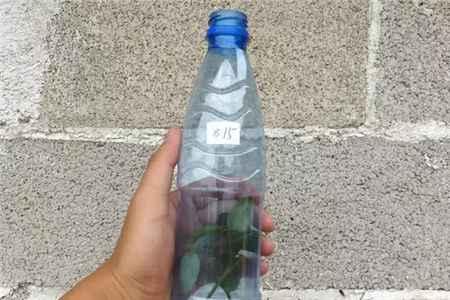
3、把塑料瓶放在窗台上,接受光照,注意保持瓶底始终有水。这样大概2周后就能生根了,生根后就可以移栽到花盆里了!
各种常见花的扦插技巧就说到这了,是不是很容易操作呢?家里比较暖和的花友现在就可以试试!
操作方法:
1、剪下一段绿萝枝条,最好挑选带有气生根的,这样绿萝更容易生根,成活率也高。

2、把剪下的绿萝再分成小段,每段保留一片叶就行。

3、把绿萝插到准备好的花盆里,土不要覆盖的太厚。然后浇一次水,放在通风的位置养护。

4、等到绿萝开始生长,长出新叶的时候,可以把绿萝搬到南阳台,晒一晒太阳,用不了两个月,就能长成一盆全新的绿萝!

长寿花
操作方法:
1、剪下长寿花的枝条,分成小段,每段只留一对叶子就可以,否则叶片多了会增加养分流失,影响生根速度。
2、把剪好的长寿枝条插到土里,长寿花扦插对土壤要求不高,用普通园土加点沙子就行。

3、等到长寿花长出新叶之后,就可以搬到阳台,多晒太阳,每周浇1次水,很快就能长成一盆大长寿花了!

发财树
操作方法:
1、剪下比较健壮的发财树枝,最好是一年以上的木质枝条,每个扦插的枝条保留2~4片叶子就可以。

2、把发财树枝条插到准备好的沙子里,浇一遍水,放在阴凉的地方养护,之后每天都喷喷水,保持河沙湿润。

3、大概一个月以后,发财树就能生根了,这时候再移栽到花盆里就可以了。
天竺葵
操作方法:
1、把天竺葵枝条剪成小段,每段10厘米左右,留1~2片叶子就足够了。剪下来不要 急着插,先放到阴凉的地方晾1天。

2、一天后,准备好河沙,把天竺葵枝条插到沙子里,浇水浇透,然后每天给天竺葵喷喷水。
3、大概15~20天,天竺葵就能长出新根了,生根后移栽到大花盆里养护就可以了。
月季
操作方法:
1、扦插月季最好选生长1年以上的枝条,用剪刀分成5~8厘米的小段,剪掉残花,保留叶子。

2、把月季花枝条放进塑料瓶里,瓶底倒点水,不需要太多,0.5~1厘米左右就可以了。

3、把塑料瓶放在窗台上,接受光照,注意保持瓶底始终有水。这样大概2周后就能生根了,生根后就可以移栽到花盆里了!
各种常见花的扦插技巧就说到这了,是不是很容易操作呢?家里比较暖和的花友现在就可以试试!
2
3
文章
权问薇
2018年02月04日


一、具体方法
1、选择生长环境
我们都知晓,在种植每一种植物的时候,想要让植物存活都要先了解什么样的环境更适合植物生长,像迷你矮珍珠这样的水草类植物比较适合生长在温度适中的水温当中,这样他们才更能够存活下来,之后一定要选择粗沙粒作为这种植物的生长基底。
2、修剪
找到适合迷你矮珍珠生长的环境和条件之后,就可以种植了,首先一定要适当的修剪这类的植物,一定要将迷你矮珍珠本身没有长好的叶子或者根部除掉,这样才能顺利完成种植流程,并且也能够规避迷你矮珍珠种植后出现腐败的情况发生。
3、种植
它的根部是比较细小的,所以我们在栽种的时候尽量要避免伤害它的根部,可以先用镊子轻轻的夹住根部,然后再慢慢的将其植入生长的沙砾中,填好沙粒的空隙就完成了,尽量在栽种的时候要每株迷你矮珍珠都保持适中的空间。

二、注意事项
想要种植迷你矮珍珠必须具备足够的细心和耐性,如果稍有差池很可能就导致迷你矮珍珠出现烂根死亡的情况,而且在栽种的时候,要一步步按照每一个流程慢慢去完成,千万不要着急,在种植过后也要详细的进行检查,如果发现种植有误应该做适当的改善。
相信你已经开始盘算在自家的鱼缸里种植几株迷你矮珍珠了吧,其实迷你矮珍珠只要符合种植的流程,是非常好养的,但是平时我们也一定要注意鱼缸的清洁工作,尽量要给鱼缸里的鱼类和植物类营造一个舒服又干净的环境。
0
0
文章
权问薇
2018年02月04日

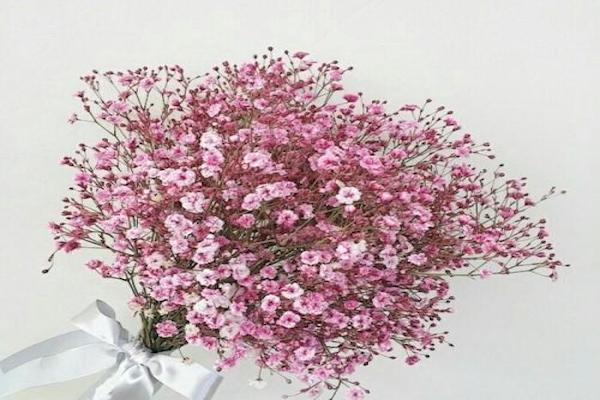
一、满天星的修剪方法
1、按季节
冬天满天星的花朵几乎全部凋落,所以没有修剪的必要,此外在春季夏季或者秋季都可以对满天星进行修剪,任意时候都能查看满天星枝叶的生长情况,并且及时剪掉多余的对于主干生长无用的枝叶,例如腋枝,这样可以达到将已有的主要枝条的优势进行有效集中的目的,同时方便植株更好地接受光照,更好地利用光能合成有机物,更好地进行养分积累。
2、主枝的培育
如果是在进行主枝的培育,可以选择在修剪的时候把侧枝都剪掉,这样可以引导新生出来的穗向外部空间进行生长,增大对空间的有效利用,加强空气在植株的各部分之间的流通。

3,、美观
如果只是为了美观的目的,那满天星的枝叶可以随意按照个人喜好进行修剪,被剪掉的部位在短期内很快就能再长出更嫩更新的满天星枝叶,如果修剪频率越高,长出的新叶也就越多,整个植株看起来也就更有生命力,也显得更加丰满。
4、为了更好生长
修剪枝叶的同时也可以对根部进行一些修理,因为满天星每年都会换一次土,所以可以借助换土的时机适度地修剪根系,从而引导它的根长成更具有观赏价值的悬根。

二、修剪后的养护方法
修剪后的生长需要充分的阳光照射,因此需要把它放在太阳能够直射,同时具有良好的通风条件的地方,但是要注意空气中要具有一定的湿度,不能太干燥,否则不利于满天星的光合作用。
此外,浇水频率不需要过高,只需要看到土壤稍微有些干燥之后再进行浇水。

1
4
文章
权问薇
2018年02月04日


1、及时的把它移栽室内
到了冬天以后,大家都知道,温度就会慢慢开始越来越低,所以这时候我们一定要将玉树及时的移到室内,并且还要把温度维持在7到10度,这样才不会把它冻伤了。
如果有哪一天,外面的天气非常暖和,阳光也很好,我们就可以在中午的时候,将它移动到室外,让它享受一下光照,这样可以让它的叶子进行一定的光合作用,以便于植株更好生长,之后等到夜晚的时候,再把它移回到房间里。

2、控制好盆土的干湿度
在冬天的时候,土壤的湿度也需要我们的关注,一般在这个时候尽量少浇一点水,让盆土稍微干燥一点,并经常用一些细喷雾往它的叶子上喷一喷,这样就可以很好的给它补水。所以一般情况下,是无需给它浇水的。
3、移到暖棚里保温
到了冬天的时候,有一些人会选择把它移到室内,但是有时候温度不好控制,所以有条件的,可以把它移到暖棚里面,这样保温效果更好。如果没有条件的,也不要怕,我们可以找一些薄膜给它罩起来,但是要注意里面的湿度,如果发现湿度太大的话,一定要及时的把薄膜揭开,让它通一下风,换下气,防止它叶子腐烂。

4、正确处理冻伤植株
在冬天的时候,有一些植株免不了会出现冻害,而我们就会以为它死掉了,然后就会将它们丢掉,其实这样是不对的。如果发现冻伤的植株,我们只需要将它冻死的叶子、枝条给清理掉,把主茎保存起来就好了,等到下年春天到来的时候,给它施加一定的肥料,它依旧可以很快的长出来新的枝叶,一般过上1到2年,就可以长成一棵新的玉树了。

0
0
文章
权问薇
2018年02月04日


一、花盆的选择
1、花盆的材质要求
如果想要对它进行盆栽,那首先就要选择一个适合的盆子,一般可以用泥质花盆、塑料盆、瓷盆、陶盆等,但是为了跟自己的家庭装饰相协调,其中用的最多的就是瓷盆,这是不容置疑的。
2、花盆的大小
花盆的材质选好之后,就要看一下盆子的大小了,一般我们都是根据玉树植株的大小来决定盆子大小,正常用16到28厘米直径的盆子就足够了。

二、盆土的选择
了解它的人都知道,它不怎么耐寒,一般都是喜欢干燥、通风好的环境,而且对土壤的要求也不怎么高,只要土壤疏松、肥沃、排水好就行了,一般就是选沙壤土质最好。土壤选好之后,我们就要给它调配一下,一般就是用一些腐叶土、园土和河沙给它混合一下。另外,因为它非常耐旱,很害怕土壤太湿,所以选土壤时,一定能用太湿的土。

三、正确浇水
对它的盆栽进行养护的时候,浇水也是非常重要的。一般在它生长的时候,要经常保持盆土是湿润的。如果在这个过程中土壤排水不好,而你又浇水太多,会容易产生积水让它烂根的。但是也不能让盆土太干了,不然会容易让它落叶。浇水的时候,我们可以根据天气情况和温度来控制浇水的量,一般在夏天的时候我们可以适当的多浇一点,同时还要注意给房间内通风降温,这样才能让它更好生长,然后到了冬天的时候,就要控制去浇水量了,一般只要隔个7到10天给它浇一次水就可以了。另外,浇水的时候,也要注意一点,尤其是夏天,不能让太多水留存在叶子上,不然会对叶子不好。
0
0
文章
张祥明
2018年02月04日


一、水分引起的
1、缺水造成的
有人在养它的时候,总是会因为忙绿而忘记给它浇水,所以就会让它长时间的缺少水分,一旦水分缺失的太多,就会让它的根部不能正常呼吸,无法吸收充足的养分,进而让植株的叶子掉落,所以我们一定不能让它长时间的缺水。另外如果发现缺水,切记不能马上使劲去浇,一定要慢慢的等水分渗透到栽植土的内部再继续浇,这样才能让它顺利的接受水分。
2、水分过多引起的
上面有些人忘记浇水,但还有些人为了想让它长得更快,就不停的去浇水,以至于基质内水分过多,产生积水,大家都知道,根在有积水的情况下,呼吸是严重受限的,进而就会容易烂根,这样就会出现掉叶子现象了。所以一旦遇到这样的情况,一来要重新换土,二来还要记得以后少浇水,次数勤一点就行了。
二、光照引起的
1、光照过少
养它的时候,有些人总喜欢把它放在房间内阴暗的地方,以至于它长时间缺少光照,这样就会对它产生影响,使得植株不能很好生长,然后就会拼命掉叶子。所以我们一定要满足它的光照需求,这样才能支持它健康的生长。
2、光照过强
尽管它非常喜欢光照,但是一定不能让光照太强了,不然就那会容易损伤叶子,甚至还会让植株死掉,尤其是在夏天的时候,更要小心接受光照,平时只要偶尔拿出来晒晒就行了。
三、冻害引起的
有时候,在温度较低的时候,我们没有给它及时保暖,就会让它容易发生冻害,继而它的叶子就会变得越来越软、干瘪,最后直至掉落,严重的时候整个植株上的叶子都会掉光。所以我们一定要注意天气情况,给它适时保温。

0
0
文章
Miss Chen
2018年02月04日

Description: This herbaceous perennial plant is about 1' tall. Multiple stems often develop from the crown of the taproot, and each stem occasionally branches. The stems are somewhat woody at the base and have a tendency to sprawl; they are usually covered with both glandular and non-glandular hairs. Pairs of opposite leaves occur at intervals along each stem. These leaves are up to 2" long and ¼" across; they are linear to linear-lanceolate, smooth along the margins, and glabrous to hairy. The base of each leaf is sessile or slightly clasps the stem.
The upper stems terminate in small cymes of about 3 flowers; less often, individual flowers may develop from the axils of the upper leaves. The slender pedicels of the flowers are up to 1" long and covered with hairs, like the stems; they are often reddish green. Each flower is about ¾" across, consisting of a tubular calyx with linear teeth and a a tubular corolla with 5 spreading lobes. The calyx is green or reddish green and covered with hairs. The corolla is white or pale blue-violet; the opening at its throat is quite small. The petal-like lobes are narrow and cleft at their tips to about one-half of their length. The blooming period occurs from mid-spring to early summer and lasts about 1½ months. Each flower is replaced by an oblongoid seed capsule that is 3-celled and contains several small seeds. The root system consists of a taproot. This plant spreads by reseeding itself and may form colonies at favorable sites.
Cultivation: The preference is full or partial sun, mesic to dry conditions, and sandy or rocky soil where there is reduced competition from other plants. This plant adapts well to sunny slopes.
Range & Habitat: The native Sand Phlox is occasional to locally common in sandy areas of central and northern Illinois, otherwise it is uncommon or absent (see Distribution Map). Habitats include mesic to dry sand prairies, hill prairies, sandy savannas, sandy shoulders of roads, thinly wooded bluffs, cliffs, and limestone glades. Occasional wildfires are beneficial in reducing competition from woody vegetation.

Faunal Associations: Butterflies, skippers, and moths suck nectar from the flowers. The caterpillars of the moth Heliothis phloxiphagus (Spotted Straw) feed on the flowers, while the caterpillars of the moth Lacinipolia olivacea (Olive Arches) feed on the foliage. Another insect, Lopidea davis (Phlox Scarlet Plant Bug) sucks on the sap. Most mammalian herbivores readily eat the foliage of Phlox spp.
Photographic Location: A sandy area along a road in Kankakee County, Illinois, where this species is locally common.
Comments: Sand Phlox has lovely flowers. The strongly cleft lobes of the flowers distinguish it from other Phlox spp. Across its range, Sand Phlox is somewhat variable in the appearance of its flowers and the hairiness of its foliage. Another subspecies of Sand Phlox, Phlox bifida stellaria, has flowers that are cleft to about one-fourth the length of their lobes. The foliage of this subspecies has only non-glandular hairs, while the typical subspecies has both glandular and non-glandular hairs. The subspecies Phlox bifida stellaria is restricted to only 1 or 2 counties in southern Illinois, where it occurs in upland rocky areas. Regardless of the subspecies, another common name for Phlox bifida is Cleft Phlox.
The upper stems terminate in small cymes of about 3 flowers; less often, individual flowers may develop from the axils of the upper leaves. The slender pedicels of the flowers are up to 1" long and covered with hairs, like the stems; they are often reddish green. Each flower is about ¾" across, consisting of a tubular calyx with linear teeth and a a tubular corolla with 5 spreading lobes. The calyx is green or reddish green and covered with hairs. The corolla is white or pale blue-violet; the opening at its throat is quite small. The petal-like lobes are narrow and cleft at their tips to about one-half of their length. The blooming period occurs from mid-spring to early summer and lasts about 1½ months. Each flower is replaced by an oblongoid seed capsule that is 3-celled and contains several small seeds. The root system consists of a taproot. This plant spreads by reseeding itself and may form colonies at favorable sites.
Cultivation: The preference is full or partial sun, mesic to dry conditions, and sandy or rocky soil where there is reduced competition from other plants. This plant adapts well to sunny slopes.
Range & Habitat: The native Sand Phlox is occasional to locally common in sandy areas of central and northern Illinois, otherwise it is uncommon or absent (see Distribution Map). Habitats include mesic to dry sand prairies, hill prairies, sandy savannas, sandy shoulders of roads, thinly wooded bluffs, cliffs, and limestone glades. Occasional wildfires are beneficial in reducing competition from woody vegetation.

Faunal Associations: Butterflies, skippers, and moths suck nectar from the flowers. The caterpillars of the moth Heliothis phloxiphagus (Spotted Straw) feed on the flowers, while the caterpillars of the moth Lacinipolia olivacea (Olive Arches) feed on the foliage. Another insect, Lopidea davis (Phlox Scarlet Plant Bug) sucks on the sap. Most mammalian herbivores readily eat the foliage of Phlox spp.
Photographic Location: A sandy area along a road in Kankakee County, Illinois, where this species is locally common.
Comments: Sand Phlox has lovely flowers. The strongly cleft lobes of the flowers distinguish it from other Phlox spp. Across its range, Sand Phlox is somewhat variable in the appearance of its flowers and the hairiness of its foliage. Another subspecies of Sand Phlox, Phlox bifida stellaria, has flowers that are cleft to about one-fourth the length of their lobes. The foliage of this subspecies has only non-glandular hairs, while the typical subspecies has both glandular and non-glandular hairs. The subspecies Phlox bifida stellaria is restricted to only 1 or 2 counties in southern Illinois, where it occurs in upland rocky areas. Regardless of the subspecies, another common name for Phlox bifida is Cleft Phlox.
0
0
文章
Miss Chen
2018年02月04日

Description: This annual plant is 1-4' tall, branching occasionally. It is more or less erect, often bending toward the light in partially shaded locations. The stems are light green to red, terete, relatively stout, and glabrous; they have a tendency to zigzag between the alternate leaves. The leaves are up to 7" long and 2½" across; they are medium to dark green, glabrous on both the upper and lower sides (for this variety), narrowly lanceolate to lanceolate in shape, and smooth to minutely ciliate along their margins. On rare occasions, the leaves are marked with chevrons that are faintly darkened, otherwise they are unmarked. The petioles are up to 1" long, usually light green, glabrous, and plano-convex (flattened above and convex below). At the bases of petioles, there are ring-like ochrea (membranous sheaths) that surround the stems. These ochrea are ¼–¾" long, light green to light brown (depending on their age), longitudinally veined, and translucent; their upper rims are truncate to asymmetric and devoid of bristles. The upper stems terminate in 1-2 spike-like racemes of flowers that are about ¾-2½" long and cylindrical in appearance; these racemes are usually straight and they are erect to ascending.
Small flowers and flower buds are densely crowded along the entire length of each raceme, surrounding its rachis (central stalk) in all directions. Along this rachis, are ochreolae (small membranous sheaths) that are spaced at short intervals from each other; several flowers are associated with each ochreola. Each flower is 3-4.5 mm. long (1/8" or slightly longer), consisting of 5 tepals, several stamens, and a pistil. The tepals are white, light pink, or rosy pink; they are joined together along the lower one-half of their length, while their tips are ovate and erect. The anthers are white or pink. The peduncles of the racemes are ¾–3½" long, light green to reddish green, terete, glandular-pubescent, and either unbranched or dichotomously forked. Peduncles that are forked produce 2 racemes of flowers. The blooming period occurs during the summer or early autumn, lasting about 1 month for a colony of plants. There is no noticeable floral scent. Afterwards, the flowers are replaced by achenes (one achene per flower). These achenes are 2-3.5 mm. long and almost as much across; they are dark brown to black, flattened-orbicular in shape, smooth, and shiny. The root system consists of a taproot with smaller and more shallow lateral roots. Colonies of plants are often formed at favorable locations.

Cultivation: The preference is full or partial sun, moist conditions, and rich loamy soil. Standing water is tolerated if it is temporary. This robust plant is rather weedy and easy to grow – it has more tolerance to drought than many other smartweeds. The leaves are rarely blemished by disease, although they are sometimes attacked by insects.
Range & Habitat: The native Pennsylvania Smartweed occurs in every county of Illinois, where it is common (see Distribution Map). Habitats include wet prairies, prairie swales, swamps, low areas near ponds or rivers, edges of marshes, degraded seasonal wetlands, abandoned fields, low areas along railroads, roadside ditches, vacant lots, fence rows, and waste areas. This annual plant thrives on the reduced competition resulting from disturbance.

Faunal Associations: The flowers of Pennsylvania Smartweed attract many kinds of insects, including honeybees, bumblebees, cuckoo bees (Epeolus spp., Triepeolus spp.), digger bees (Melissodes spp.), leaf-cutting bees (Megachile spp.), Halictid bees, Andrenid bees, Sphecid wasps, Vespid wasps, spider wasps (Anoplius spp.), Syrphid flies, Tachinid flies, flesh flies (Ravinia spp.), and miscellaneous butterflies and moths (Robertson, 1929). Most of these insects feed on the nectar and they help to cross-pollinate the flowers. Other insects feed on the leaves, roots, plant juices, and other parts of Pennsylvania Smartweed and other smartweeds (Persicaria spp.). These species include the Red-headed Flea Beetle (Systena frontalis) and other leaf beetles, larvae and adults of various weevils, the Polygonum Aphid (Capitophorus hippophaes) and other aphids, larvae of the Dock Sawfly (Ametastegia glabrata) and other sawflies (Ametastegia spp.), larvae of the Bent-line Carpet (Orthonama centrostrigaria) and other moths, and larvae of the Bronze Copper (Lycaena hyllus) and other butterflies. See the Insect Table for a listing of these and other species.

Among vertebrate animals, the seeds of Pennsylvania Smartweed and other smartweeds are an important source of food to many bird species, including waterfowl, upland game birds, and granivorous songbirds (see the Bird Table). The seeds are also eaten by small rodents, including the White-footed Mouse and wild House Mouse (Whitaker, 1966). According to Ernst et al. (1994), several turtles feed on smartweeds (probably the foliage to a minor extent); this includes such turtles as the Snapping Turtle (Chelydrina serpentina), Painted Turtle (Chrysemys picta), Eastern Box Turtle (Terrapene carolina), and Slider (Trachemys scripta). Mammalian herbivores usually avoid the foliage of Pennsylvania Smartweed and most other smartweeds because their leaves are somewhat bitter and peppery.
Photographic Location: The photographs were taken at a vacant lot near Urbana, Illinois, and a seasonal wetland at Judge Webber Park of the same city.

Comments: This native plant, along with other members of the genus, is often undervalued because it is considered too common, and the flowers are not thought to be sufficient large and pretty. In fact, Pennsylvania Smartweed is rather attractive when the flowers are bright pink, and its ecological value to birds, moths, butterflies, and other insects, regardless of the color of the flowers, is quite high. Different varieties of this smartweed have been described by some authors (e.g., Mohlenbrock, 2002); Persicaria pensylvanica laevigata is the most common variety in Illinois, which is distinguished from the others by the glabrous lower surface of its leaves. Distinguishing Pennsylvania Smartweed from other smartweed species (Persicaria spp.) can be difficult, in part because of its variability across different populations of plants. This variability includes such features as the color of flowers (white, light pink, rosy pink), the hairiness of the foliage, and the width of the leaves. Pennsylvania Smartweed has the following features that are sometimes helpful in making a correct identification as to species: 1) the ochrea on its stems lack bristles along their upper rims, 2) the peduncles of its inflorescences are usually glandular pubescent, 3) its spike-like racemes are usually straight and more or less erect, rather than curved and nodding, 4) it usually forms taller plants than most smartweed species and its leaves are more long and wide, and 5) its flattened seeds are usually larger in size. Other common names for this smartweed are 'Pinkweed' and 'Big-seeded Smartweed.' Another scientific name of this plant is Polygonum pensylvanicum laevigatum.
Small flowers and flower buds are densely crowded along the entire length of each raceme, surrounding its rachis (central stalk) in all directions. Along this rachis, are ochreolae (small membranous sheaths) that are spaced at short intervals from each other; several flowers are associated with each ochreola. Each flower is 3-4.5 mm. long (1/8" or slightly longer), consisting of 5 tepals, several stamens, and a pistil. The tepals are white, light pink, or rosy pink; they are joined together along the lower one-half of their length, while their tips are ovate and erect. The anthers are white or pink. The peduncles of the racemes are ¾–3½" long, light green to reddish green, terete, glandular-pubescent, and either unbranched or dichotomously forked. Peduncles that are forked produce 2 racemes of flowers. The blooming period occurs during the summer or early autumn, lasting about 1 month for a colony of plants. There is no noticeable floral scent. Afterwards, the flowers are replaced by achenes (one achene per flower). These achenes are 2-3.5 mm. long and almost as much across; they are dark brown to black, flattened-orbicular in shape, smooth, and shiny. The root system consists of a taproot with smaller and more shallow lateral roots. Colonies of plants are often formed at favorable locations.

Cultivation: The preference is full or partial sun, moist conditions, and rich loamy soil. Standing water is tolerated if it is temporary. This robust plant is rather weedy and easy to grow – it has more tolerance to drought than many other smartweeds. The leaves are rarely blemished by disease, although they are sometimes attacked by insects.
Range & Habitat: The native Pennsylvania Smartweed occurs in every county of Illinois, where it is common (see Distribution Map). Habitats include wet prairies, prairie swales, swamps, low areas near ponds or rivers, edges of marshes, degraded seasonal wetlands, abandoned fields, low areas along railroads, roadside ditches, vacant lots, fence rows, and waste areas. This annual plant thrives on the reduced competition resulting from disturbance.

Faunal Associations: The flowers of Pennsylvania Smartweed attract many kinds of insects, including honeybees, bumblebees, cuckoo bees (Epeolus spp., Triepeolus spp.), digger bees (Melissodes spp.), leaf-cutting bees (Megachile spp.), Halictid bees, Andrenid bees, Sphecid wasps, Vespid wasps, spider wasps (Anoplius spp.), Syrphid flies, Tachinid flies, flesh flies (Ravinia spp.), and miscellaneous butterflies and moths (Robertson, 1929). Most of these insects feed on the nectar and they help to cross-pollinate the flowers. Other insects feed on the leaves, roots, plant juices, and other parts of Pennsylvania Smartweed and other smartweeds (Persicaria spp.). These species include the Red-headed Flea Beetle (Systena frontalis) and other leaf beetles, larvae and adults of various weevils, the Polygonum Aphid (Capitophorus hippophaes) and other aphids, larvae of the Dock Sawfly (Ametastegia glabrata) and other sawflies (Ametastegia spp.), larvae of the Bent-line Carpet (Orthonama centrostrigaria) and other moths, and larvae of the Bronze Copper (Lycaena hyllus) and other butterflies. See the Insect Table for a listing of these and other species.

Among vertebrate animals, the seeds of Pennsylvania Smartweed and other smartweeds are an important source of food to many bird species, including waterfowl, upland game birds, and granivorous songbirds (see the Bird Table). The seeds are also eaten by small rodents, including the White-footed Mouse and wild House Mouse (Whitaker, 1966). According to Ernst et al. (1994), several turtles feed on smartweeds (probably the foliage to a minor extent); this includes such turtles as the Snapping Turtle (Chelydrina serpentina), Painted Turtle (Chrysemys picta), Eastern Box Turtle (Terrapene carolina), and Slider (Trachemys scripta). Mammalian herbivores usually avoid the foliage of Pennsylvania Smartweed and most other smartweeds because their leaves are somewhat bitter and peppery.
Photographic Location: The photographs were taken at a vacant lot near Urbana, Illinois, and a seasonal wetland at Judge Webber Park of the same city.

Comments: This native plant, along with other members of the genus, is often undervalued because it is considered too common, and the flowers are not thought to be sufficient large and pretty. In fact, Pennsylvania Smartweed is rather attractive when the flowers are bright pink, and its ecological value to birds, moths, butterflies, and other insects, regardless of the color of the flowers, is quite high. Different varieties of this smartweed have been described by some authors (e.g., Mohlenbrock, 2002); Persicaria pensylvanica laevigata is the most common variety in Illinois, which is distinguished from the others by the glabrous lower surface of its leaves. Distinguishing Pennsylvania Smartweed from other smartweed species (Persicaria spp.) can be difficult, in part because of its variability across different populations of plants. This variability includes such features as the color of flowers (white, light pink, rosy pink), the hairiness of the foliage, and the width of the leaves. Pennsylvania Smartweed has the following features that are sometimes helpful in making a correct identification as to species: 1) the ochrea on its stems lack bristles along their upper rims, 2) the peduncles of its inflorescences are usually glandular pubescent, 3) its spike-like racemes are usually straight and more or less erect, rather than curved and nodding, 4) it usually forms taller plants than most smartweed species and its leaves are more long and wide, and 5) its flattened seeds are usually larger in size. Other common names for this smartweed are 'Pinkweed' and 'Big-seeded Smartweed.' Another scientific name of this plant is Polygonum pensylvanicum laevigatum.
0
0
文章
权问薇
2018年02月04日


一.原因分析
1.给水次数及水量过多。因为给水过多,造成新叶泛黄,但老叶子没有什么明显的变化。
2.缺水。有水量过多的情况不可避免地也会有缺水的情况,因水不够会引起下面的老叶子黄掉,时间长了会整株叶子黄掉从而干枯死掉。
3.肥料过多。肥料放置过多会使新叶子表面坑坑洼洼生长不平。
4.缺肥料。不按时施肥会让植株缺少营养,新叶子和嫩茎会黄掉,时间长了会使植株死掉。
5.植株缺铁。室内种植会让土壤不稳定,会随时变化,会使叶子呈现不同程度的干瘪黄掉。

二.解决办法
1.浇水问题:要按时浇水,控制浇水量和浇水的次数来避免浇水过多或植株缺水引起的植株叶子干瘪。
2.肥料问题:要按时按量进行进行追肥,避免一次性肥料过多让植株发育畸形或长时间不施肥让植株缺失营养而引起的叶子泛黄的情况。
3植株缺铁问题:按比例用7份饼肥和5份硫酸亚铁一起和水配成稀释液浇到植株上,可解决这个问题。
总结:要在养护上多加细心,充分了解其习性以及生长环境,既要保持盆栽内的水分又要适当地给予阳光照射,并要在高温时注意给它通风遮挡阳光。此外还要定期修剪植株,给盆栽内的土进行松土透气等。

0
0
文章
权问薇
2018年02月04日


1.操作的时间
我们一般对铃兰进行施肥的时候,也不是随时都可以施肥的,都是要看适不适合。一般在它生长较为旺盛的时候我们可以对它多施一点肥料,因为这时候正是它长得正好的时候,需要的养分也是很多的,所以要多施加一点。但是等到它快要开花的时候就要小心一点了,一般我们可以在它开花前15天进行施加一次肥料,等到它抽花苞的时候就可以停止施肥了,然后花凋谢了以后就可以在追加1到2次的肥料,这样就可以让它的根茎生长的更加充实。最后在早春和秋末的时候还要各施肥一次,用那些充分发酵好的肥料。

2.施肥的方法
我们在施肥的时候也是有方法的,不是说可以随便施肥的,那样子出来的效果是不一样的。一般我们在施肥前可以疏松一下它的花土,这样子再进行施肥的话就能让它的根更加充分的吸收。施完肥料之后我们还可以稍微浇一点水,效果会更加的好。另外在施肥时候千万不能把肥料撒到它的根和叶子上面,不然的话肥料会把它们的根和叶子烧掉的,所以施肥的时候一定要注意了。
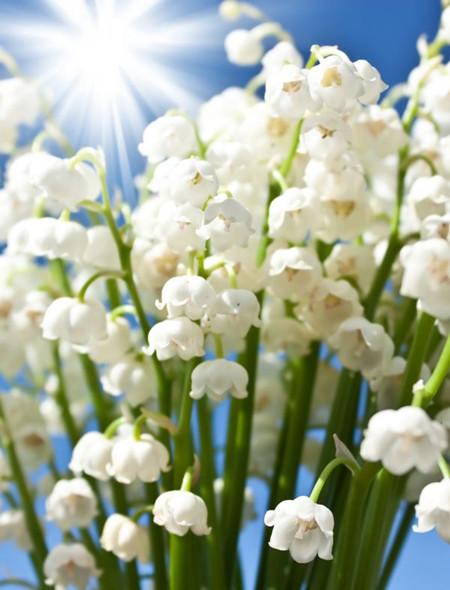
3.施什么肥料
我们再对铃兰施肥的时候不能够单纯的只是使用一种肥料,一定要不同时期选不同种类的肥料,一般刚开始的时候我们都是会选择一些氮肥进行施加,但是等到它快开花的时候我们就可以再添加一点磷肥,我们一定要注意氮磷钾肥料的综合使用,这样子才能够更好的满足它们对养分的需求,才能够让铃兰更好的生长起来。所以使用什么肥料一定要按照专业的指导去施加。

0
0
文章
权问薇
2018年02月04日


一、露珠杜鹃的肥料管理
1、土壤要求
杜鹃适合生长在酸性土中,碱性土壤容易造成杜鹃的发育不良,露珠杜鹃对土壤的要求更高。北方人民爱养露珠杜鹃,但是北方的土壤却不适合露珠杜鹃是生长,因为北方的土壤PH值比较偏碱性,所以种植露珠杜鹃的培养土要使用腐植土一起配制。

2、肥料浓度
种植露珠杜鹃的人都知道,它们的根呈胡须状,而且还特别的细,所以对肥料的配制有很高的要求,而且对水的质量也有很高的要求。所以在施肥的时候一定要把握住浓度,千万不能太高,所以你可以多多施薄肥,勤劳一点。
3、施肥种类
那么在不同的季节如何施肥呢?露珠杜鹃在春天的时候需要加一次磷肥,这样可以在开花之前加速花叶和花蕾的生长。开花后需要施一到两次的氮磷等混合肥料。到了秋季的时候,又到了孕蕾期了,这时候又要施一到两次的磷肥。所以可以看出来,露珠杜鹃就是在生长和开花这两个阶段比较费事费时。

二、露珠杜鹃的浇水管理
露珠杜鹃喜欢凉爽而且湿润的环境,所以要时刻保持着花周围的湿度,自然要时刻保持花周围的空气湿度。就夏季来说,土壤和植株内的水份极易蒸发,从而导致土壤很干,所以在夏季的时候要多多浇水,保持土的湿润度。冬季的时候,不要浇水太勤,干了再浇即可,也不要浇的太多,因为冬天生长本来就比较缓慢,水太多容易造成根部会腐烂。

三、露珠杜鹃的花期控制
秋季的时候,露珠杜鹃会进行花芽的分化,人们发现了这个规律之后,开始自行的控制花期。可以先提前冷藏露珠杜鹃,如果想让它提前开花,就把它放到温室里进行养殖,把温度控制在二十五摄氏度左右,并且要勤往花叶上浇水,保持周围的空气湿度达到八十以上,再耐心等待45天左右就会收获美丽的露珠杜鹃。
0
0
文章
权问薇
2018年02月04日


1.花的花期
春兰花,顾名思义就是春季才会开放的兰花了,不过它虽然是在春季的时候开放的,但是它并不是正好就在元旦的时候展现花姿的。它的花期比起其它类型的花要短的多,一般来讲的话,正常情况下它的花期都是在当年的2月至3月,它只有短短不到一个月时间的花期,那么如何让它在我们想要看到的时候开放呢?这就需要一些小技巧了,接下来我就来告诉大家一下如何可以在元旦的时候就欣赏到春兰那优美的花姿。

2.花期调控
光照因素
植物的成长大多都是离不开阳光的。但是有些植物并不是很喜欢阳光,因此它们就不用太依赖阳光的光源。春兰就是这些植物他们之间的一个成员,春兰一般比较喜欢处于阴凉环境下,它属于阴性植物,平常的时候不适宜被太多的阳光所照射到。我们为了可以加快它的开花速度,而对它进行适当的遮阴处理,在它还未开花即将要开花的3个月前就把它进行大约百分之90的遮阴。并把温度降低到12度以下,这样可以让它误以为现在是冬寒状态,从而使它提早进入春化的阶段,这样做可以让它差不多提前快一个月的时间开花。

温度因素
合适的温度也能大大的催化春兰的成长速度,那么最适合春兰的温度应该是多少呢?什么样的温度才能让它加快开花的速度呢?春兰不喜欢太高的温度,当它所处的环境的温度比15度还要高时,它的正常开花就会受到非常大的影响,几乎到了要停止成长的地步了。春兰在5度至10度的时候的生长速度可以达到最大,在那个范围那开花速度会大大的加快。
1
0


